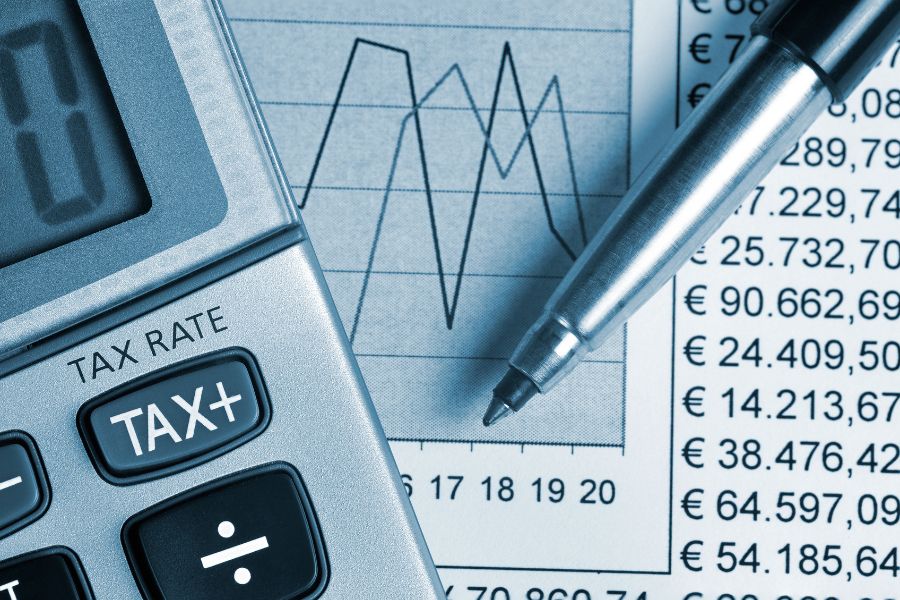To calculate and deduct your bad debt, you’ll need to first determine if the bad debt is business or nonbusiness. Next, you’ll need to calculate the amount and timing of the bad debt and then report it. Before reviewing the details for each step, it’s important to note that a tax deduction for bad debt is generally only allowed when a specific debt has been identified as not being collectible. This direct write-off method is different from the allowance method used for GAAP.
The only alternative to the direct write-off method for taxes is the nonaccrual-experience method The nonaccrual-experience method is similar to the allowance method for GAAP but is only available to closely held businesses in certain professional service industries or businesses with gross receipts in previous years of less than $5 million. While many businesses will qualify to use the method, calculation requires a formal financial statement used for a CPA audit, SEC filings, or other regulatory filings. . Business bad debts can be deducted as ordinary business expenses, whereas nonbusiness bad debts are deducted as short-term capital losses.
Key Takeaways:
- Cash-basis taxpayers cannot deduct bad debt not previously included in income.
- Debt must be genuine; in other words, not a gift.
- For taxes, business bad debt can only be written off when an identifiable receivable is deemed worthless.
Step 1: Determine if the Bad Debt Is Business or Nonbusiness
Before deducting a bad debt, you should first determine if it is business or nonbusiness. A business bad debt can only be generated or obtained through your trade or business.
Business bad debt is most commonly created when a business is unable to collect outstanding accounts receivable after having included those credit sales in income. The bad debt:
- Must have arisen from a legitimate contract; a bonafide and verifiable relationship must exist between a debtor and creditor to avoid the appearance of a gift
- Must have no expectation of future fulfillment
- Is not deemed worthless until after the business has taken appropriate collection measures
Examples of Business vs Nonbusiness Bad Debts | |
|---|---|
Business | Nonbusiness |
Loan to a client | Loan to a friend from personal bank account |
Loan to an employee | Loan to a relative from personal funds |
Sales to a customer on credit | Any loan arising from a nonbusiness transaction |
Step 2: Calculate the Amount and Timing of the Bad Debt
Under the direct write-off method, business bad debts must be identifiable and worthless, but you can deduct a partially worthless debt if a portion of an outstanding debt will never be collected. A deduction against ordinary income is taken for business bad debts in the year that they become partially or fully worthless. Nonbusiness bad debts are only deductible when they are fully worthless, at which point they result in a short-term capital loss.
For instance, ABC Company has an outstanding invoice from Joe for $10,000. On December 1, 2024, it continues its collection efforts but feels it will probably be able to collect only $8,000.
- Takeaway: ABC Company does not have a bad debt deduction on December 1 because collection efforts are continuing.
On January 15, 2025, ABC Company agrees to forgive $2,000 of the debt in exchange for Joe entering a repayment plan for the remaining $8,000 plus interest.
- Takeaway: ABC Company can deduct $2,000 of bad debt on January 15 because that portion of the invoice has become worthless.
The exact amount of the debt is written off at the time that the business identifies the receivable as uncollectible.
The journal entry for the write-off is shown below.
Description | Post. Ref | Debit | Credit |
|---|---|---|---|
Bad Debt Expense | 1001 | 2,000 | |
Accounts Receivable | 2001 | 2,000 | |
To record the uncollectible debt | |||
Step 3: Report the Bad Debt
Business and nonbusiness debts are reported differently on the tax return.
Business Bad Debt
A business bad debt is an ordinary business expense and is directly subtracted from business income. The deduction is reported on a different line depending on the entity type.
- Sole Proprietorships/Single-member LLC: Schedule C, line 27a
- C Corporations: Form 1120, line 15
- S Corporations: Form 1120S, line 10
- Partnerships/Multi-member LLC: Form 1065, line 12
Nonbusiness Bad Debt
Report nonbusiness bad debts as short-term capital losses on Form 8949, Part I, line 1.
- Column “a” should include the debtor’s name and disclose that a bad debt statement is attached.
- The debt outstanding should be entered as the basis in column “e.”
- Zero should go in column “d” as the proceeds.
Since nonbusiness bad debts are treated as capital losses, limitations apply. This means that the bad debt loss you recognize is first used to offset your capital gains for the year.
If there are leftover losses after the current year capital gains are absorbed, you can offset ordinary income of $3,000. Any remaining losses are carried forward to future years, and capital losses carried to future years can be used to offset future capital gains plus $3,000 per year of ordinary income until completely used up.
Nonbusiness bad debt should be supported by a statement attached to the taxpayer’s return.
The statement must include the following information:
- Debt description (amount and due date)
- Debtor name
- Disclosure of any business or family connection between you and the debtor
- Collection attempts
- Reason for determining debt worthlessness
Bad Debts and Cash-basis Taxpayers
In order to take a bad debt tax deduction, the bad debt amount must have previously been included in income. A cash-basis taxpayer reports income when cash is received. Without a sale being recorded in income, no bad debt expense would be recognized if the credit sale eventually becomes uncollectible.
In contrast, an accrual-basis taxpayer records income when it is earned. Since those sales have already been included in income, they are eligible to be treated as bad debt if they are later deemed uncollectible.
Our related resources:
Frequently Asked Questions (FAQs)
Yes. A business bad debt that is fully or partially worthless can be written off in the year that determination is made. A nonbusiness bad debt must be fully worthless in order to be written off.
Yes, but the amount and how the deduction is reported depends on whether or not the debt is a business or nonbusiness bad debt.
Bankruptcy of a debtor, inability to locate a debtor, and legal statute of limitations are some of the many factors that can be used to support the classification of a debt as uncollectible.
Bottom Line
A bad debt deduction creates a reduction in taxable income and lowers your tax liability. To deduct bad debt expense, the bad debt must be authentic and verifiable. To figure out the manner and amount of the deduction, you must first determine if the debt is business or nonbusiness. To report a business bad debt, you must first identify the debt as uncollectible, record it in your books, and then report it on your tax return on the applicable line. Maintain thorough records to support your bad debt claim, in the event of subsequent IRS inquiry.


